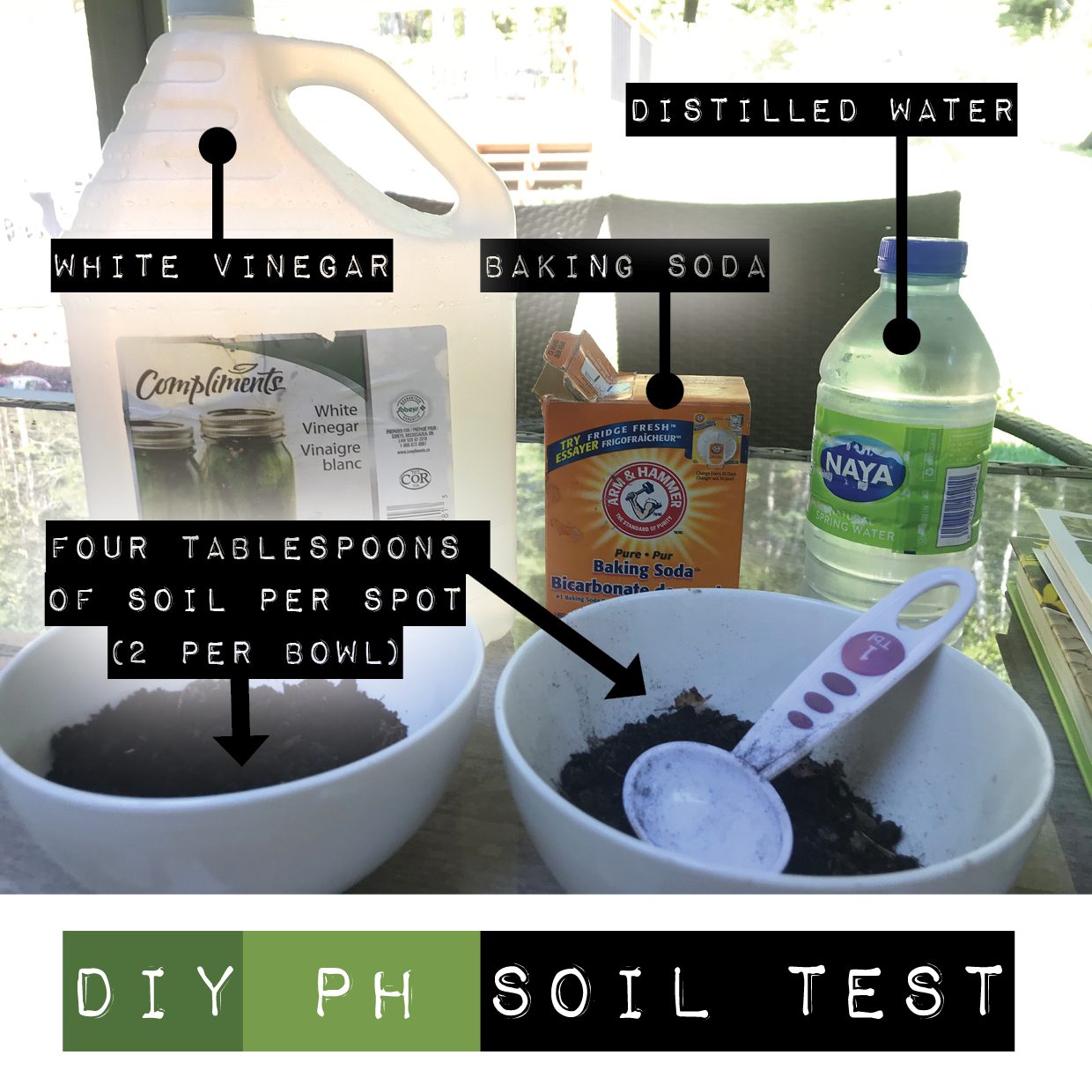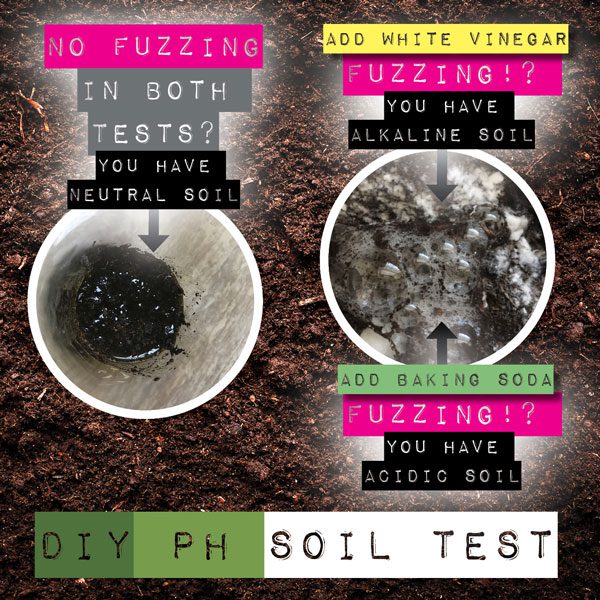Playing the role of a mad scientist is always fun, and there are plenty of experiments you can do that will help you learn a little bit more about how your garden grows! Here’s an easy DIY test that will tell you what your soil’s pH levels are.
Soil pH is important because it promotes plant growth by determining what kind of nutrients are available to them. It influences soil bacteria, nutrient leaching, toxic elements, and soil structure.
This soil test is from the book Garden Alchemy: 80 Recipes And Concoctions for Organic Fertilizers, Plant Elixers, Potting Mixes, Pest Deterrents, and More.
Author Stephanie Rose says plants typically thrive in neutral soils with a pH level of 6.5-7, but there are a few exceptions to the rule.
For example, rhododendrons and blueberries love acid and do well with lower pH levels (4.5-5.5). Asparagus and sweet peas can tolerate pH levels of up to 7.
The following test won’t tell what your range is, but it will let you know if you have alkaline, acidic, or neutral soil. All you need is some earth from your garden and a few household pantry staples!
Soil pH Test
You will need:

- Two bowls or containers
- Four tablespoons of soil from the same spot in the garden
- Distilled water (not tap water!)
- White vinegar
- Baking soda
The experiment:
- Add two tablespoons of soil to one of the bowls and mix with one tablespoon of water.
- Add one tablespoon of white vinegar and stir. If there is any fizzing, you have alkaline soil.
- In the second bowl, take two tablespoons of earth and mix with one tablespoon of water.
- Add one tablespoon of baking soda and stir. Is it fizzing? You have acidic soil.

If there was no fizzing in either of the tests, you have neutral soil, and your plants should be reasonably happy!
If you need to raise your soil’s pH levels, do so by adding a fertilizer that’s high in phosphorous or some limestone.
Lower high pH levels by adding organic mulch, sphagnum peat, or granular sulfur (but not too much!) to the garden beds.
If you choose to use fertilizer to correct your soil pH, make sure you read the labels to avoid burning your precious plants.
Happy testing!